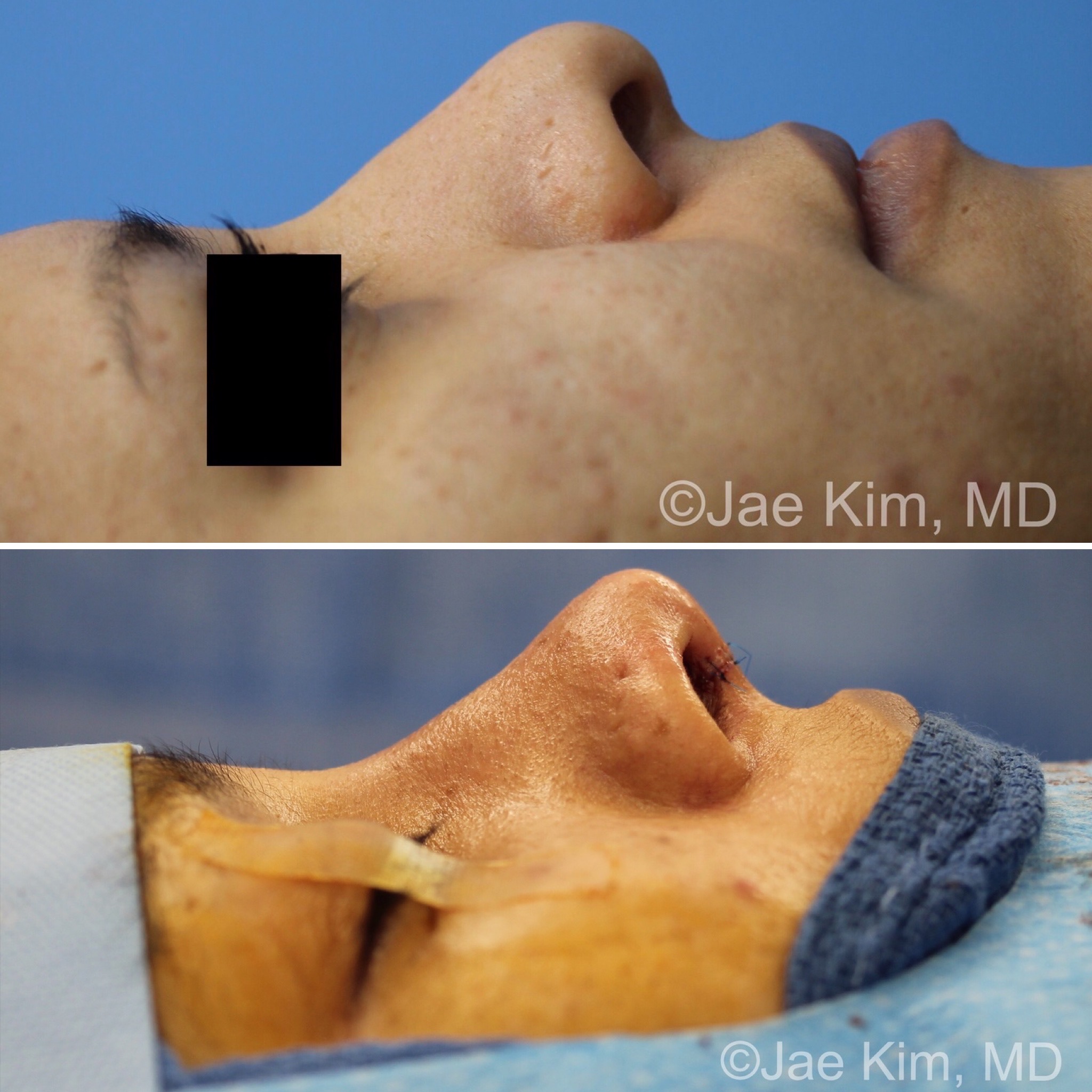All About Rhinoplasty Austin Tx
Table of ContentsThe Nose Job PDFsSome Known Facts About Rhinoplasty Austin.Some Ideas on Rhinoplasty Austin You Need To Know
Technically, the cosmetic surgeon's incisional method classifies the nasal surgical treatment either as an open nose job or as a closed nose surgery procedure. In open nose surgery, the surgeon makes a little, irregular incision to the columella, the fleshy, exterior-end of the nasal septum; this columellar cut is extra to the normal set of incisions for a nasal correction.Rhinoplastic correction: A kid affected with a cleft lip and a cleft palate. nose job austin tx. Other than for the columellar incision, the technical and procedural techniques of open nose job and of closed rhinoplasty are comparable; yet closed nose job procedure features: Reduced dissection (cutting) of the nasal tissuesno columellar cut Decreased possible for the extreme reduction (cutting) of the nasal-tip assistance Reduced post-operative edema Reduced visible scarring Decreased iatrogenic (inadvertent) damage to the nose, by the cosmetic surgeon Increased availability for effecting in situ procedural and technical changes Palpation that allows the cosmetic surgeon to feel the interior modifications effected to the nose Much shorter operating space time Quicker post-surgical healing and convalescence for the client The open rhinoplasty approach manages the cosmetic surgeon advantages of ease in protecting grafts (skin, cartilage, bone) and, most notably, in protecting the nasal cartilage properly, therefore much better to make the appropriate assessment and remedy.

Cleft lip and palate in mix; cleft lip (cheiloschisis) and cleft palate (palatoschisis), separately. Genetic nasal irregularities Genetically derived ethnic-nose problems Allergic and vasomotor rhinitis swellings of the mucous membrane of the nose caused by an irritant, and triggered by circulatory and nerve system conditions. Bites animal and human Burns triggered by chemicals, electricity, friction, heat, light, and radiation.
Neoplasms deadly and benign growths Septal hematoma a mass of (normally) thickened blood in the septum Toxins chemical damages brought on by inspired compounds e. g. rhinoplasty austin. powdered drug, aerosol antihistamine medications, et cetera. Traumatic deformities triggered by blunt trauma, permeating trauma, and blast trauma. Venereal infection e. g., syphilis Recently, ultrasonic nose surgery which was presented by Massimo Robiony in 2004 has become an alternative to standard rhinoplasty.

How Nose Job Austin can Save You Time, Stress, and Money.
Generally, the plastic cosmetic surgeon first separates the nasal skin and the soft tissues from the osseo-cartilagenous nasal framework, and after that reshapes them, stitches the incisions, and applies either an external or an internal stent, and tape, to immobilize the recently rebuilded nose, therefore help with the recovery of the surgical cuts.

The autologous grafts normally are harvested from the nasal septum, however, if it has insufficient cartilage (as can happen in a revision nose job), then either a costal cartilage graft (from the rib cage) or an auricular cartilage graft (concha from the ear) is gathered from the client's body. When the rhinoplasty requires a bone graft, it is harvested from either the cranium, the hips, or the chest; additionally, when neither kind of autologous graft is readily available, a synthetic graft (nasal implant) is utilized to augment the nasal bridge.
To record the "before-and-after" physiognomies of the nose and the face of the patient, the particular visual viewpoints needed are photos of the nose seen from the anteroposterior (front-to-back) point of view; the lateral view (profiles), the worm's-eye view (from below), the bird's-eye view (overhead), and three-quarter-profile views. Photograph A. Open nose job: At nose job's end, after the cosmetic surgeon has sutured (closed) the cuts, the corrected (brand-new) nose will be dressed, taped, and splinted immobile to permit the undisturbed healing of the surgical cuts. Open nose job: Post-operative, official site the taped nose, prepared to get the metal nasal splint that paralyzes and secures the recently fixed nose. Picture C. Open nose job: The metal nasal splint help wound recovery by safeguarding the tender tissues of the new nose. Photograph D. Open nose job: The taped, splinted, and dressed nose finishes the rhinoplasty.
Open nose job: After the initial taping of the nose, a tailor-made, metal nasal-splint, created, cut, and formed by the cosmetic surgeon, is emplaced to debilitate and safeguard the tender tissues of the brand-new nose throughout convalescence. Photograph D. Open nose job: The taping, emplacement of the metal splint, and dressing of the brand-new nose complete the rhinoplasty procedure.
Photo 2. use this link Open nose surgery: The ideal lower lateral cartilage (blue) is exposed for correction. Photo 1. Open nose job: The columellar incision defined as a red-dot guideline, will help the surgeon in the exact suturing of the nose. Photograph 4. Rhinoplastic correction: A nasal-hump excision strategy; the black line defines the dorsal airplane of the new nose.
Open nose surgery: the nasal tip is sutured to narrow the nose. Picture 1. Open nose job: The incisions are endonasal (in the nose), and thus are concealed. The skin-incision to the columella aids the cosmetic surgeon in exactly suturing to conceal the scarexcept for the columellar incision (red-dot standard) throughout the nasal base.
How Rhinoplasty can Save You Time, Stress, and Money.

Picture 2. Open rhinoplasty: The nasal interior. The scissors indicate the lower lateral cartilage (blue), which is one of the wing-shaped cartilages that conform the tip of the nose (austin rhinoplasty surgery). The jagged red delineation shows the location of the columellar incision. When the skin has been lifted from the bone-and-cartilage framework, the surgeon performs the nasal correction jobs.